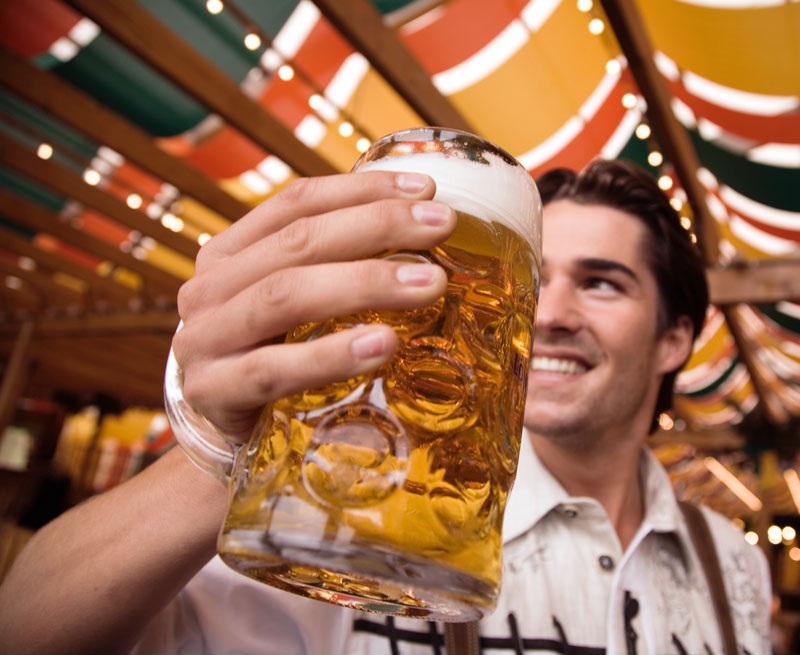Two years ago in this very space, when I last opined on beer and wine, I acknowledged that the very idea of selling alcohol remained remote for some concepts, and far-fetched for many. But the drive for higher margins, coupled with the fact that many adult customers simply see beer and wine as essential components of a good meal, has led to a sizable shift in the past 24 months. The question for many quick-serve chains now is not whether to serve beer and wine, but when and how.
As enterprising, forward-thinking concepts consider their next moves, and as others look at additional ways to bolster the top line, they might look beyond the mega brewers and their large advertising budgets to feature the wares of some of the nation’s approximately 1,700 craft breweries. Several will no doubt change their bottle inventory and taps seasonally to
reflect both the weather outside and the seasonal menu offerings inside.
Some chains may hire expert tasters to create food and beer or wine pairings that perfectly complement specific menu selections. And still others may commission their own boutique fermentations so as to create proprietary flavor profiles that drive repeat visits and greater loyalty.
Each and every one of these ideas has merit and represents a potentially worthwhile investment of menu-development, procurement, or marketing dollars, particularly when you consider the Millennial Effect. A substantial percentage of this up-and-coming generation—born between 1977 and 1992—is now of drinking age. And, as the market research firm Nielsen noted in a January 2011 report, they are more likely than other consumer demographics to explore new and different alcoholic beverage products.
With this dynamic in mind, as chains contemplate the potential for beer and wine to make positive contributions to profits, I suggest they look past the bottle, can, and tap to more adventurous, and potentially lucrative, terrain. I refer here to the vast number of more unusual beverages that can be created using beer and wine as ingredients, rather than as standalone products.
And validating this shift in perspective, I believe, is the inexorable march toward less sugar-laden carbonated soft drinks that we are seeing very clearly in the trend landscape. Just ask a New Yorker how serious he or she thinks the mayor is about enforcing the newly enacted soft-drink law, or how serious the board at PepsiCo is about its desire to provide less sweet, better-for-you options. All of this should provide operators with the opportunity and the rationale to explore other beverage options, including those of the alcoholic variety.
As anyone who’s ever enjoyed a glass of sangria on a hot day will attest, this is not a new idea. Mixing wine, fruit juices, fresh fruit, and herbs or garnishes is nothing new. But in a quick-serve setting? Still fairly revolutionary. The combination of a sweet flavor profile, lower alcohol content brought about by the diluting ingredients, and fun factor could make for a delicious addition to an Italian-themed menu, for instance.
Mixing wine with other ingredients—juices, sodas, soda waters, and liqueurs, primarily—is becoming increasingly voguish as cloying Moscatos and Rieslings find favor among young club goers, who are by now accustomed to tasting them as components of mixed drinks. Indeed, food and cocktail websites these days are awash in Moscato cocktail and punch recipes. For nonpurists who favor easy-drinking stand-ins for sodas, sweet teas, lemonades, and other standard soft-drink fare, the appeal is obvious.
Beer offers at least as many intriguing and (forgive me) untapped possibilities. From beer shandies made with 7UP or Sprite to other mixed drinks concocted from beer mixed with ginger ale, sweet or savory vegetable juices, hard ciders, lemonade, teas, and even coffee, the options are many and varied.
What’s more, the precedents are already firmly in place. Micheladas are Mexican cocktails typically made from beer mixed with lime and tomato juices, plus various herbs and sauces; chaladas are essentially the same animal, but with clamato in place of unadulterated tomato juice.
Many U.S. backyards in the summer play host to beer margaritas, which consist of frozen limeade concentrate mixed with beer and tequila. And at the haute end of the beer cocktail spectrum, last summer, New York Times columnist Frank Bruni reported that the always-unorthodox WD-50 on Manhattan’s Lower East Side was serving a so-called “Black & Yellow,” consisting of a top layer of dark ale and a bottom layer of kumquat-infused gin, yuzu juice, and St. Germain, the elderflower liqueur.
Since that time, many other high-end mixologists have continued experimenting with various beer cocktails and arriving at some equally interesting and exciting variants. So the trail, for those in the quick-serve world, has been blazed. My suggestion: Follow it where it leads, and innovate around beer and wine.






